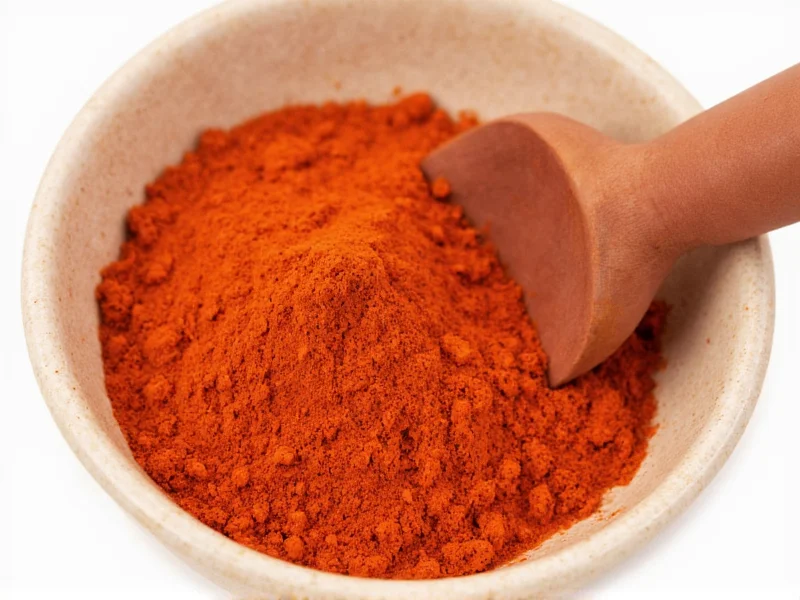When you're in the middle of cooking and realize you've run out of paprika, knowing reliable alternatives can save your recipe. Paprika serves multiple purposes in cooking—it adds color, subtle sweetness, and varying levels of heat depending on the variety. Understanding what you're trying to replicate in your dish determines the best paprika replacement.
Understanding Paprika's Culinary Role
Paprika isn't just a single spice but a category with significant variations. Hungarian paprika ranges from sweet to hot, while Spanish paprika (pimentón) often features smoky notes from dried peppers smoked over oak fires. American paprika typically falls somewhere in between. Before selecting a substitute, identify which characteristic matters most for your recipe:
- Color—that distinctive red hue in dishes like goulash or deviled eggs
- Sweetness—the mild, slightly sweet flavor in Hungarian dishes
- Heat—the kick in spicy paprika varieties
- Smokiness—the defining feature of Spanish smoked paprika
Top Paprika Substitutes by Category
Not all substitutes work equally well for every application. Choose based on what your recipe needs most:
For Sweet Paprika Replacement
When your recipe calls for standard sweet paprika (the most common variety in American pantries), these alternatives work best:
- Chili powder—Use a 1:1 ratio, but check ingredients as many blends contain garlic powder, cumin, and other spices that will alter your dish's flavor profile
- Red bell pepper flakes—Provides color and mild sweetness without heat (use 1.5x the amount of paprika called for)
- Tomato powder—Offers similar color and subtle sweetness (use 3/4 tsp tomato powder per 1 tsp paprika)
For Hot Paprika Replacement
When you need both color and heat:
- Cayenne pepper—Much hotter than hot paprika, so use sparingly (start with 1/4 tsp cayenne per 1 tsp paprika and adjust to taste)
- Crushed red pepper flakes—Provides heat with less intense color (use 1/2 tsp per 1 tsp paprika)
For Smoked Paprika Replacement
Replacing the distinctive smokiness requires more creativity:
- Chipotle powder—Provides smokiness with added heat (use 3/4 tsp chipotle powder per 1 tsp smoked paprika)
- Regular paprika + liquid smoke—Combine 1 tsp regular paprika with 1/8 tsp liquid smoke
- Grill or smoke some red bell peppers—Blend roasted peppers into your dish for authentic smokiness
| Substitute | Best For | Ratio | Flavor Notes |
|---|---|---|---|
| Chili powder | Sweet paprika | 1:1 | May add garlic/cumin flavors |
| Cayenne pepper | Hot paprika | 1/4 tsp = 1 tsp | Much hotter, use cautiously |
| Chipotle powder | Smoked paprika | 3/4 tsp = 1 tsp | Adds heat with smokiness |
| Red bell pepper flakes | Sweet paprika color | 1.5x amount | Mild, no heat |
| Tomato powder | Sweet paprika color | 3/4 tsp = 1 tsp | Slight tomato undertones |
When Substitutions Fall Short
Some dishes rely so heavily on paprika's unique profile that substitutes won't deliver authentic results. Traditional Hungarian goulash, Spanish chorizo, and certain deviled egg recipes depend on paprika's specific characteristics. In these cases, consider:
- Adjusting your menu if possible
- Visiting a nearby store for authentic paprika
- Creating a temporary blend using available spices
For Hungarian dishes specifically, the absence of authentic Hungarian paprika significantly alters the dish's character. If you frequently cook these recipes, keeping a small supply of different paprika varieties ensures you're prepared.
Practical Substitution Tips
When substituting spices, keep these professional kitchen tips in mind:
- Add gradually—Start with less than you think you need, then adjust after the dish has cooked briefly
- Consider the cooking time—Spices added early mellow, while those added at the end retain more intensity
- Balance with other flavors—If using a hotter substitute, increase sweet elements slightly
- Test as you go—Taste frequently when using unfamiliar spice combinations
Remember that spice potency varies by brand and freshness. Older spices lose intensity, while premium brands often deliver stronger flavors. When substituting, account for your specific spice cabinet's characteristics rather than relying solely on standard ratios.
Building a Flexible Spice Pantry
Understanding paprika alternatives is part of developing kitchen flexibility. A well-stocked spice collection with foundational elements lets you create effective substitutions:
- Keep basic chili powder as your paprika stand-in
- Maintain cayenne for heat adjustments
- Store smoked salt for quick smokiness
- Have dried red bell peppers for color without heat
This approach transforms potential cooking disasters into opportunities for creative adaptation. The best cooks don't just follow recipes—they understand flavor relationships that allow for intelligent substitutions when needed.
Frequently Asked Questions
Can I substitute regular paprika for smoked paprika?
Yes, but you'll lose the distinctive smokiness. Add 1/8 teaspoon liquid smoke per teaspoon of regular paprika, or include smoked salt in your recipe to approximate the flavor. For best results in dishes like paella or chorizo, seek authentic smoked paprika when possible.
What's the difference between paprika and chili powder when substituting?
Chili powder typically contains additional spices like cumin and garlic powder, while paprika is pure ground peppers. When substituting chili powder for paprika, expect additional flavor dimensions. For closer results, use pure ancho chili powder without additives, or adjust other seasonings in your recipe to compensate.
How do I substitute paprika in deviled eggs?
For deviled eggs, focus on color replacement since paprika's flavor is subtle. Use a pinch of tomato powder mixed with a tiny bit of cayenne for color and slight heat, or simply use a small amount of sweet red bell pepper flakes. The visual presentation matters most in this application.
Can I make my own paprika substitute from fresh peppers?
Absolutely. Roast red bell peppers until charred, remove skins and seeds, then dehydrate and grind into powder. For smoky flavor, smoke the peppers before dehydrating. For heat, include some cayenne or other hot peppers in the mix. This homemade version won't match commercial paprika's consistency but works in a pinch.











 浙公网安备
33010002000092号
浙公网安备
33010002000092号 浙B2-20120091-4
浙B2-20120091-4